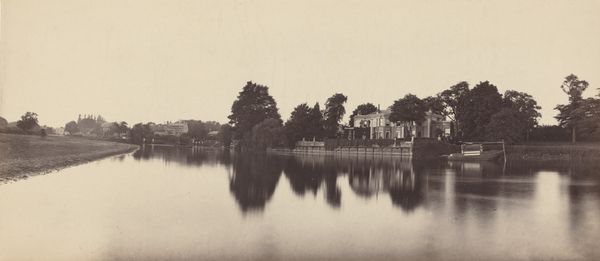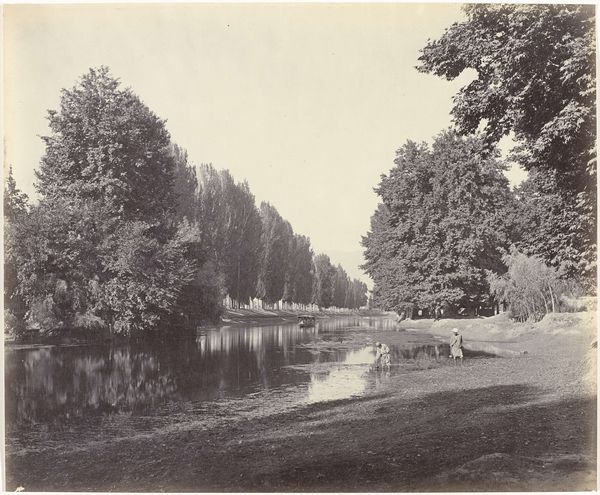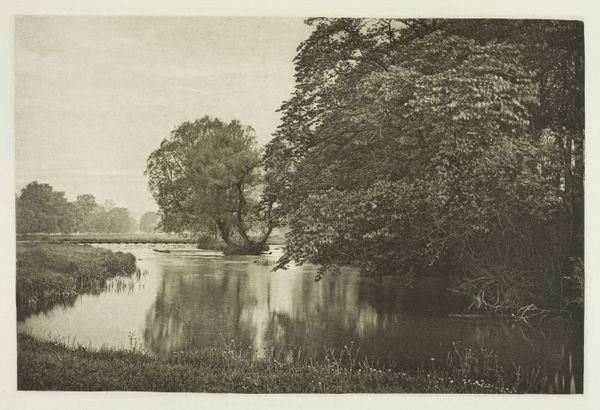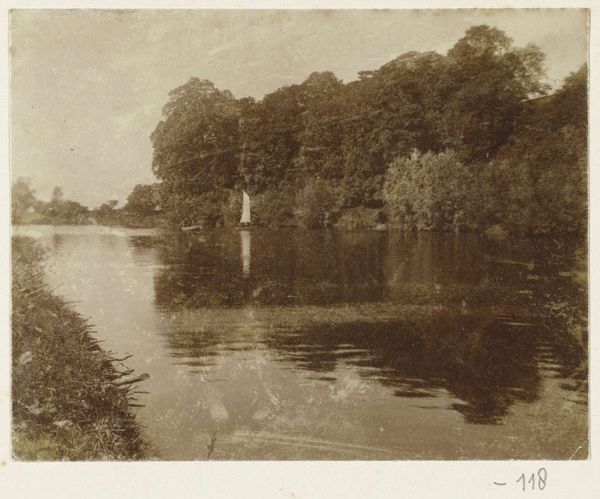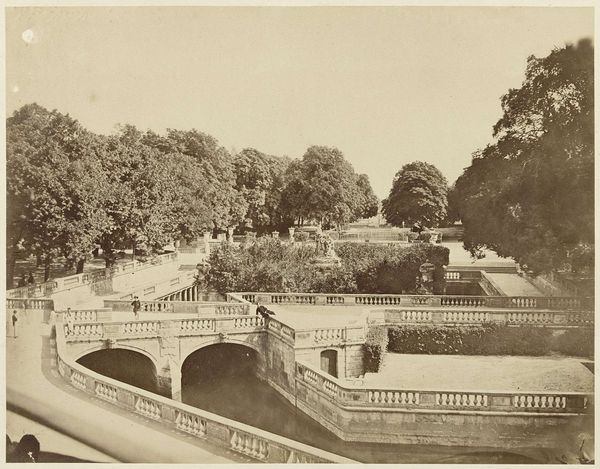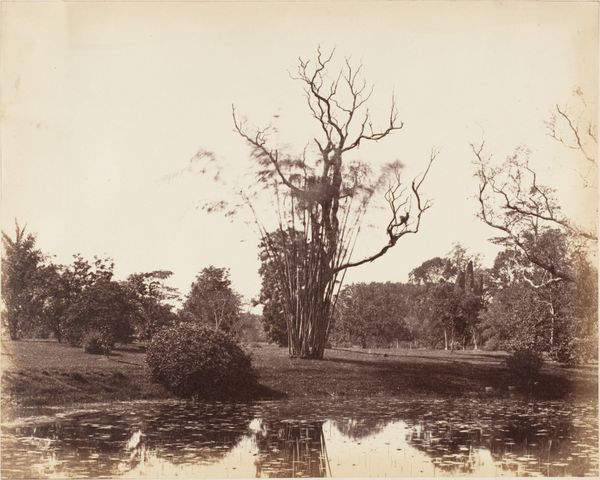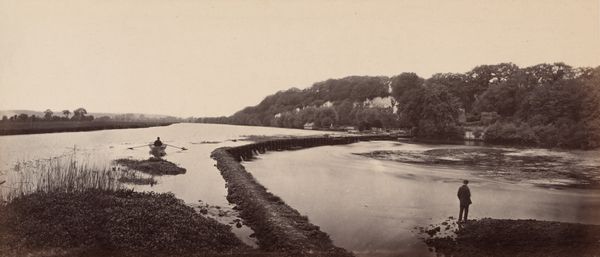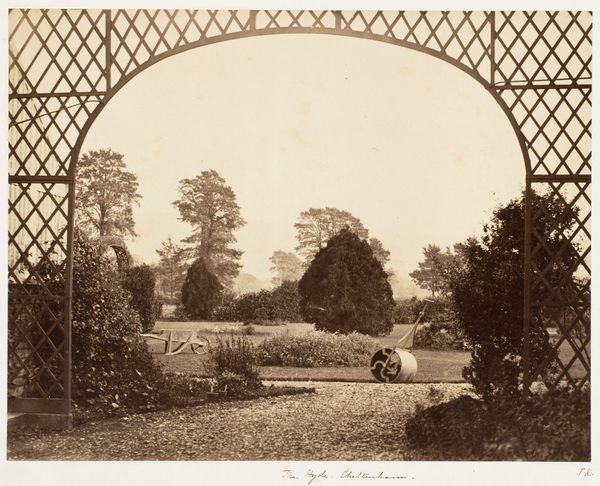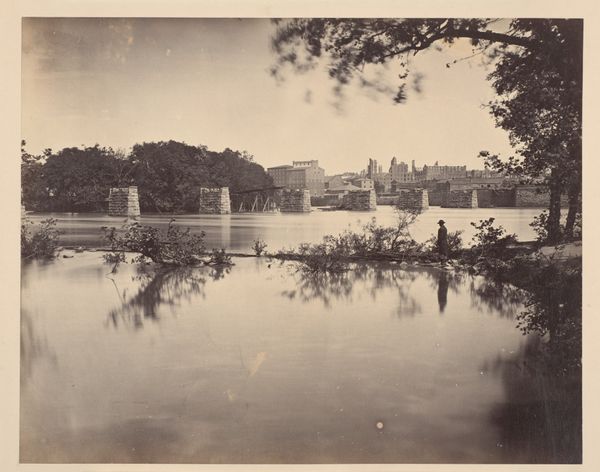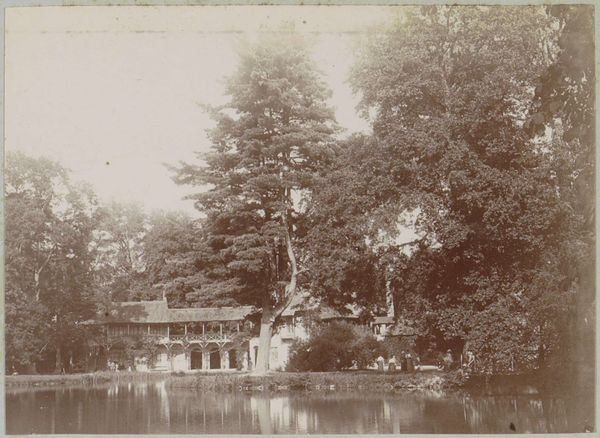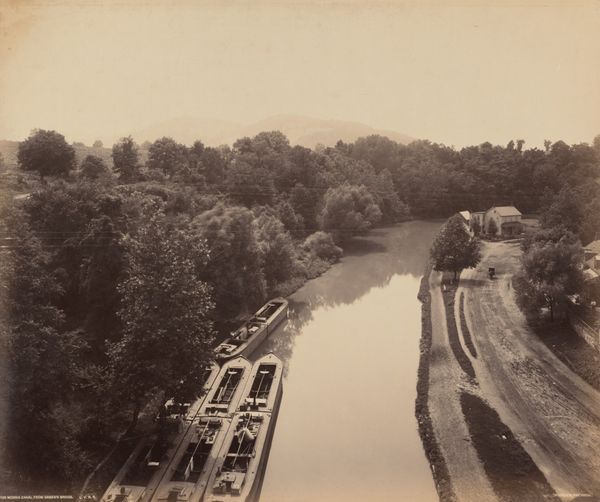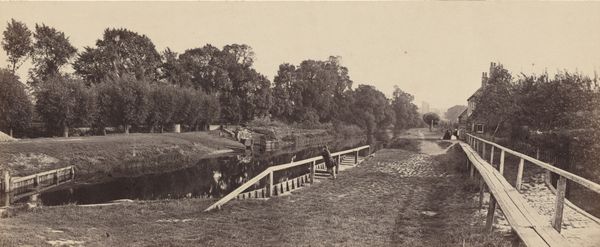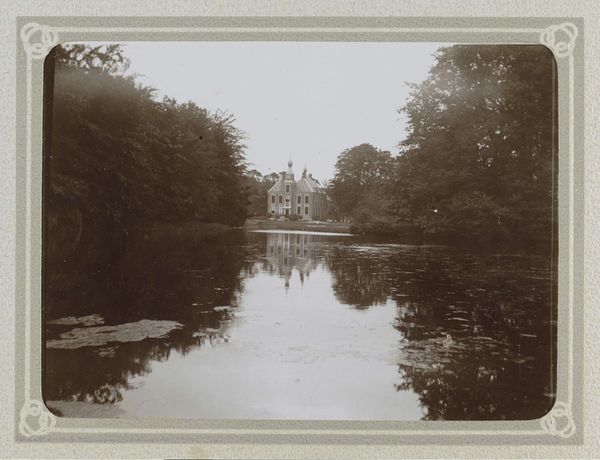
Dimensions: image: 11.8 x 28.4 cm (4 5/8 x 11 3/16 in.) mount: 30.6 x 38.2 cm (12 1/16 x 15 1/16 in.)
Copyright: National Gallery of Art: CC0 1.0
Victor Albert Prout created this albumen silver print of Hampton Court, using a process that was cutting-edge for its time. The magic of photography lies in its chemistry. First, a glass plate negative was prepared with a coating of light-sensitive silver salts. Contact printed onto paper coated with albumen – that’s egg white – the result is a sharp image with a distinctive sepia tone. This process, which emerged in the mid-19th century, democratized image-making like never before. It offered a relatively affordable way to capture and share views of the world. Consider the labor involved: from the careful preparation of the chemicals to the precision required in the darkroom. Photography in this era wasn't just pointing and shooting; it was a craft. By embracing this new technology, Prout positioned himself at the intersection of art and industry. He captured not just a scene, but also a moment in the history of making.
Comments
No comments
Be the first to comment and join the conversation on the ultimate creative platform.
